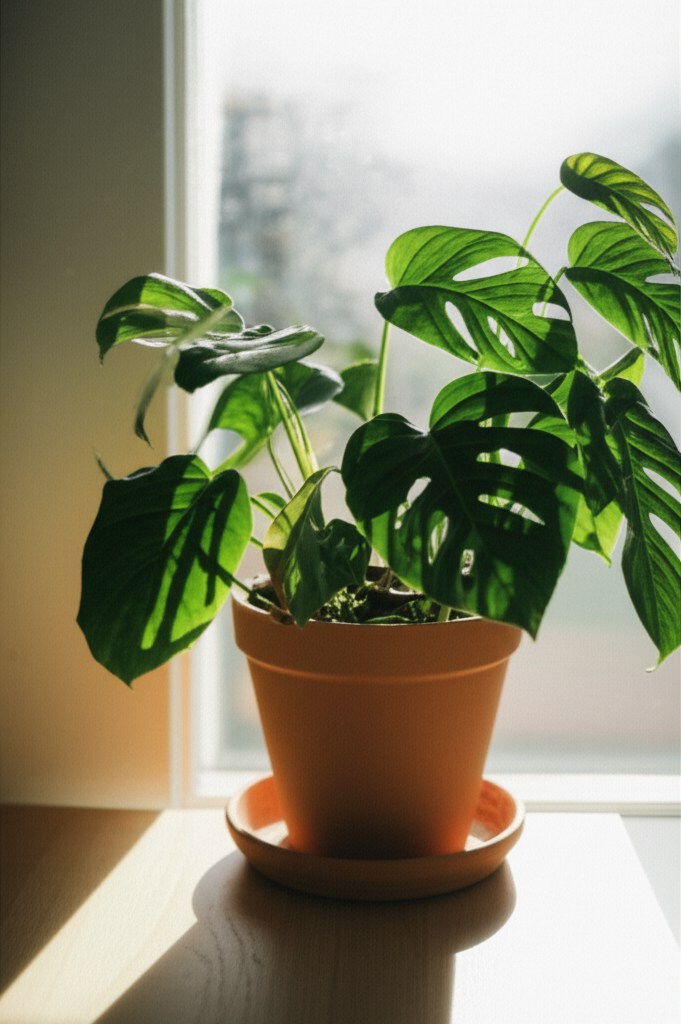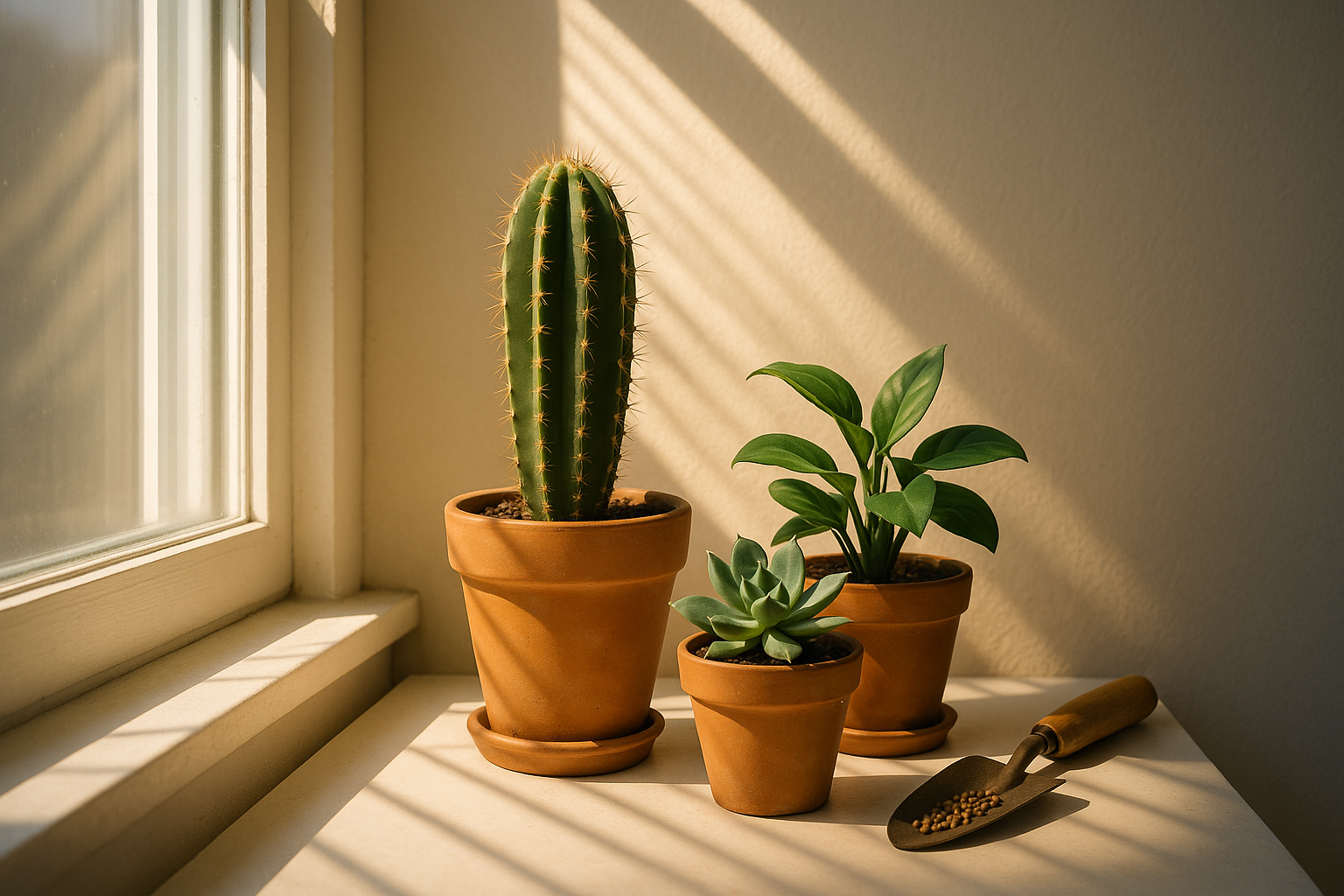
Illuminating Growth: Understanding Plant Light Requirements
Light is the energy source that fuels photosynthesis, the process by which plants convert carbon dioxide and water into sugars for growth. Providing the correct amount and type of light is as crucial as watering for the health and well-being of your indoor plants. Different plant species have evolved to thrive in varying light intensities, from the bright, direct sun of deserts to the dappled shade of rainforest understories.
How Much Light a Plant Needs
Plant light requirements are typically categorized into three main groups:
Direct Light
This refers to bright, unfiltered sunlight that shines directly onto the plant for several hours a day (typically 4-6+ hours). South-facing windows often provide direct light, especially during the middle of the day. Plants that thrive in direct light include many cacti, succulents, and some flowering plants like hibiscus.
Indirect Bright Light
This is bright light that has been diffused or filtered, either by a sheer curtain or by placing the plant a few feet away from a south- or west-facing window. East-facing windows also provide bright, indirect light. Many popular houseplants, such as pothos, philodendron, snake plants, and ZZ plants, thrive in bright, indirect light.
Low Light
This refers to areas that receive minimal natural light, such as north-facing windows or areas far from any window. While no plant can survive in complete darkness, some species are more tolerant of low light conditions. These include snake plants, ZZ plants, cast iron plants, and some types of peace lilies. However, even "low light" tolerant plants will generally grow better with more light.
It's important to note that these categories are generalizations, and the intensity of light can vary depending on the time of year, the position of the window, and any obstructions outside.
Best Spots in the House for Certain Types of Plants
Understanding the direction your windows face is key to placing your plants in optimal light conditions:

South-Facing Windows
Receive the most intense light throughout the day. Ideal for plants that require direct sun, such as cacti and succulents. You may need to move other plants slightly away from the window or use sheer curtains to filter the light and prevent scorching.
East-Facing Windows
Receive gentler morning light, which is usually bright but not as intense as midday or afternoon sun. Many tropical foliage plants and some flowering plants thrive in this light.
West-Facing Windows
Receive strong afternoon sun, which can be as intense as south-facing light, especially in the summer. Plants that prefer bright, indirect light may need protection from the direct afternoon rays.
North-Facing Windows
Receive the least amount of direct light and provide consistent, low to medium indirect light. Suitable for plants that tolerate lower light conditions.
Observing how the light changes throughout the day in different areas of your home will help you determine the best spots for your plants.
How to Supplement with Grow Lights
When natural light is insufficient, especially during winter months or in dimly lit spaces, grow lights can be a valuable tool.
- Types of Grow Lights: Various types are available, including fluorescent, LED, and incandescent. LEDs are generally the most energy-efficient and have a long lifespan.
- Light Spectrum: Plants primarily use red and blue light for photosynthesis. Full-spectrum grow lights provide a balance of these colors and are generally recommended for overall plant health.
- Intensity and Duration: The appropriate intensity and duration of grow light exposure depend on the plant species and the amount of natural light it receives. Generally, providing 10-14 hours of supplemental light per day is sufficient. The distance between the light and the plant also affects intensity, so follow the manufacturer's recommendations.
Symptoms of Too Much or Too Little Light
Recognizing the signs of incorrect light exposure is crucial for adjusting your plant's environment:
Symptoms of Too Much Light
- Scorched or Burnt Leaves: Brown, crispy patches, especially on the parts of the plant facing the light.
- Faded or Pale Leaves: Pigments can bleach out under intense light.
- Stunted Growth: While counterintuitive, excessive light can stress the plant and hinder growth.
Symptoms of Too Little Light
- Leggy Growth: Long, weak stems with sparse leaves as the plant stretches to find more light.
- Small Leaves: New leaves are significantly smaller than older ones.
- Loss of Variegation: Variegated leaves may revert to solid green in low light conditions.
- Failure to Flower: Many flowering plants require sufficient light to bloom.
- Pale Green or Yellowing Leaves: Lack of light can inhibit chlorophyll production.
By carefully observing your plants and understanding their light preferences, you can position them in locations that promote healthy growth and vibrant foliage. Don't be afraid to experiment with different spots until you find what works best for each individual plant.